SX4760 Sergeant Frederick Campbell HUGHES
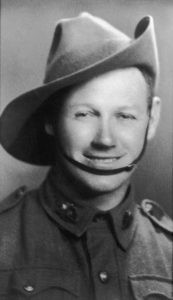
Frederick Campbell HUGHES was as born at Laura (SA) on 23 February 1912, the eldest of five children of Frederick Thomas HUGHES and Nellie Laura HUGHES (nee Campbell). Cam, as he was known, was a farmhand and married, his wife was formerly Dorothy Mildred WATSON. They were living at Yilki when Cam enlisted in 2nd Australian Imperial Force on 10 June 1940. Cam was an active member of the Militia (Reserve) with three years service in the 18th Light Horse (Machine Gun) Regiment. Initially posted to the 2/2nd Field Workshops, he was soon transferred to the 2/3rd Machine Gun Battalion that was formed up at Wayville. His younger brother, Ralph would later enlist in the 2nd AIF on 21 December 1942, and served as SX27854 Private Ralph Laurence HUGHES with the Australian Army Service Corps.
The Commanding Officer of the 2/3rd was Lieutenant Colonel A.S. BLACKBURN VC who had previously commanded the 18th LH (MG) Regiment. The unit was spread across four States; it would comprise five Companies – Headquarters and A Company from South Australia, B Company from Victoria, C from Tasmania and D Company from Western Australia. South Australian members of A and Headquarters Companies underwent basic soldier training, before moving to the Oakbank Racecourse in August 1940 where more advanced training was introduced.
On 30 October 1940, the South Australians marched to Warradale Army Camp, being joined next day by their three interstate Companies to complete the Battalion. Colonel BLACKBURN’s training regime quickened as the Battalion learnt to function as a cohesive unit during tactical exercises around Angaston and Gawler. On 15 January 1941, most of its 780 members paraded along King William Street, Adelaide, where the Governor and Premier and other dignitaries took the salute at the Town Hall. Later that month it marched to the Woodside Camp to continue training there.
Commencing on 3 February 3- Colonel Blackburn led his unit on a circuitous route march of 314 km over the next 12 days from Woodside Camp via Ashbourne, Goolwa, Victor Harbor, Cape Jervis, Normanville, Meadows, Mt Barker then back to Woodside. This event provided additional physical conditioning for all members while testing the unit’s capability to sustain itself on the march. At Victor Harbor, the Battalion marched along the main street with the Mayor taking the salute.
Following pre-embarkation leave, the Battalion travelled by train to Sydney to board their troopship on 8 April 1941, which was part of Convoy US10. At Fremantle, the Western Australian D Company joined from their home pre-embarkation leave. Reaching Suez in mid May 1941, the 2/3rd Machine Gun Battalion moved to Palestine to join the Australian 7th Division in preparation for the coming Allied invasion of Vichy French-controlled Syria.
Australians comprised more than half the attacking force and suffered 1600 casualties during the sharp campaign from 8 June until the ceasefire on 11 July 1941. In that period, the Battalion’s four machine gun companies were spread across the front line between Damascus and the coast, initially in support of three Australian and one British infantry battalions. Later these companies, and even parts of companies, were moved to support other allied units as necessary, thereby preventing the Battalion fighting as a coherent unit. B Company was committed on 10th June and the other Companies on 15th June.
In July 1941, Cam was assigned as a cook for two months before reverting to his gunner duties. After the ceasefire, the Battalion came together to form part of the occupation force and by Christmas 1941, was stationed in the mountains inland from Tripoli. There most of the men experienced snow for the first time.
In January 1942, the Battalion was one of many AIF units being returned to defend Australia against the Japanese southward advance. On the voyage to Australia, the 636 men returning aboard the Troopship Orcades were diverted to Java to support Dutch forces. Those who survived the fighting in Java became Japanese prisoners of war with many sent to the Burma Railway. Cam was among 195 men of the Battalion who sailed on seven smaller ships with its vehicles, equipment and guns reaching Adelaide during March1942. He arrived on the British cargo ship Shillong on 21 March.
Following leave, the Battalion began reforming at Springbank on 1 May 1942 then later in the month moved to Balcombe, Victoria. By the end of May 1942, it had grown to nearly 300 men and was able to commence unit training. During this time its members were making voluntary contributions to the Prisoners of War Fund. After non-commissioned officer training within the unit, Cam was promoted to Lance Corporal in July 1942, then to corporal on 1 December 1942. In December, the 700 men of the Battalion, now in camp at Cowra, undertook a 270 km route march over 11 days similar to the one in February 1941. Training with increasingly challenging exercises continued into 1943. On 2 August, Cam was transferred to the 2nd Australian Machine Gun Training Battalion at Tenterfield. There in September he was appointed acting Sergeant, returning to Cowra in November to join 1st Australian Machine Gun Training Battalion.
In May 1944, Cam rejoined the 2/3rd at Bathurst prior to it moving to Wondecla on the Atherton Tablelands in Queensland. On 7 September 1944, Cam was promoted to Sergeant.
The Battalion embarked on the American troopship UST Evangeline at Cairns on 4 December 1944 for Aitape, northern New Guinea, where it landed on 10 December to join the 6th Division. The Australians had been ordered to advance 120 kilometres westward along both the coast and inland overcoming Japanese forces as they went, then to capture Wewak. The 2/3rd was initially deployed in its Machine Gun role, but from February 1945 it fought as infantry.
One Battalion member described jungle conditions as:
Most times you couldn’t use your tent, you sat in a hole in the ground and tried to sleep with mud, water, maggots. You were working hard by day, then at night you couldn’t sleep. Mosquitoes were terrible. We used to try and wrap ourselves in our one blanket, which would be wringing wet, but our feet would stick out the bottom and we had no socks. The mosquitoes would bite your feet until they were red raw.”
Wewak was captured in May, but fighting continued until the Japanese surrender on 15 August 1945. Cam was admitted to the 2/11th Australian General Hospital on 30 April suffering from a skin condition, not uncommon in the tropics. Briefly rejoining his Battalion, he was again admitted to hospital in late May before returning to duty on 21 June. Ordered back to Australia, Cam sailed from Wewak aboard the Landing Ship HMAS Manoora which reached Sydney on 25 July, from where he entrained to Adelaide.
On 7 September 1945, a medical board downgraded his medical classification due to acne and malaria. Five days later, Cam HUGHES was discharged from the Army at Wayville.
Post-war, we know very little about his post-war life. His first wife Dorothy died on 10 December 1964; Cam later remarried, a Primrose Maud – surname unknown. Frederick Campbell HUGHES was living at Prospect when he died at the Repatriation Hospital on 20 March 1984. He was cremated and is commemorated at the Enfield Memorial Park, RSL Section.
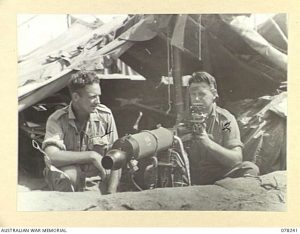
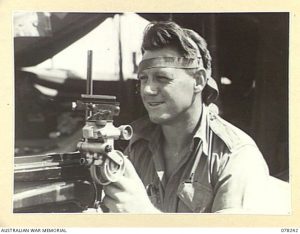
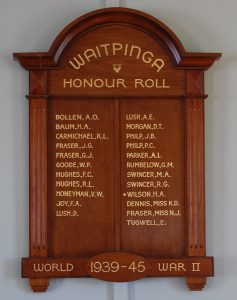
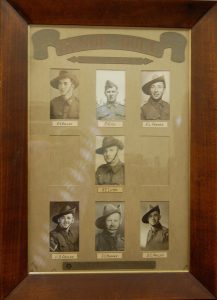
Service file of SX4760 Frederick Campbell HUGHES purchased from the National Archives of Australia ( www.naa.gov.au ), and made possible by a grant from the Department of Veterans’ Affairs. The grant also made possible the scanning of the photographs featured on the Waitpinga Pictorial Honour Roll Boards No 1 and No 2, along with the digital restoration of a number of the images of servicemen and women featured on the Waitpinga Pictorial Honour Roll Board No 3.
Australian War Memorial database ( www.awm.gov.au ).
GILL, G Hermon, Australians in the War of 1939-1945, Royal Australian Navy, Volume 1, 1939-1942, Canberra (1957).
DENNIS, Peter & four others, The Oxford Companion to Australian Military History, 2nd Edition, Oxford University Press (2008).
Wikipedia – the 2/3rd Machine Gun Battalion (Australia)
(https://en.wikipedia.org/wiki/2/3rd_Machine_Gun_Battalion_(Australia).
Compiled by the Victor Harbor RSL History Research Team, February 2013.

